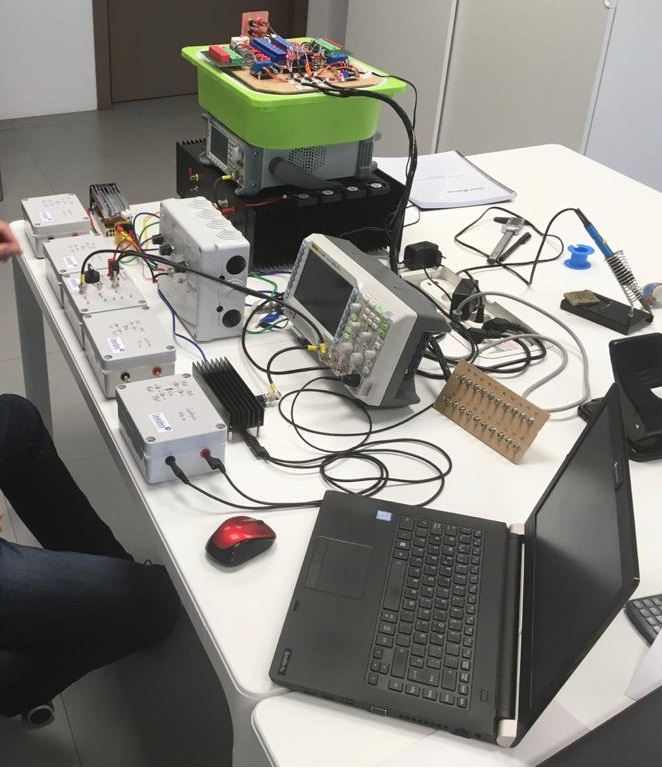Compliance with European Interoperability Directive for Track Circuits
The latest available version of the European Railway Agency document ERA-ERTMS-033281, version 4.0, introduces an electromagnetic compatibility test for track circuits. As in the case of axle counting systems, the origin of these limits are also emission limits. So, we are in a similar situation to that raised by axle detectors.
Leedeo Engineering has developed a system for generating the harmonics of the traction current based on the system developed for axle counters, relying on documentation related to track circuits.
The core of the system is the same because conceptually they are the same system. However, instead of handling an inductive load destined to generate radiated magnetic field, the load is still inductive, even if it is made up of the quadrupoles simulating sections of track.
The quadrupoles are basically made up of coils simulating x meters of rail and a ballast resistor, which also depends on the simulated metres of track. Since the frequency range is just below the frequencies of the axis counters -70 Hz to 20 kHz-, the originally developed 4-quadrant amplifier works perfectly.

In this case, UNE-EN 50617-2 and UNE-EN 50238 standards have been taken as reference standard, apart from document ERA/ERTMS/033281 v4.0. An accessory has been developed with the capacity to measure the current flowing through each of the two branches of the quadrupoles, simulating the sections of track. They operate over the entire test bandwidth, from 70 Hz to 20 kHz. 0.5 Ω shunt has been included with a switch to simulate the presence of a train, plus a resistance unbalance of up to 200 Ω has been manufactured, being selectable in steps of 0.1 Ω. Finally, a total interference current measurement system has been manufactured as indicated in the UNE-EN 50617-2 standard.
The result is a system capable of generating total interference currents, which are shown on all frequency bands of the 3 power supplies, as follows: 25 kV AC 50 Hz, 15 kV AC 16.7 Hz and 3 -1,5 kV DC. All current sensors, as well as the shunt that simulates the presence of a train, have been calibrated in an ENAC-accredited laboratory with excellent results. This gives us total confidence in the operation of the system.
Next, an example of a test configuration is shown. It can be clearly seen the system and its correspondence with the scheme that appears in UNE-EN 50617-2 standard.
The system must be adjusted with the quadripoles simulating the track section on which the track circuit is to be tested.

At Leedeo Engineering, we are specialists in the development of RAMS and Interoperability Railway projects, applying Interoperability Directives, CENELEC standards EN 50126, EN 50129, EN 50128, EU Implementation Regulation 402/2013 with the application of the Common Safety Methods CSM-RA.
Are you interested in our articles about RAMS engineering and Technology?
Sign up for our newsletter and we will keep you informed of the publication of new articles.





